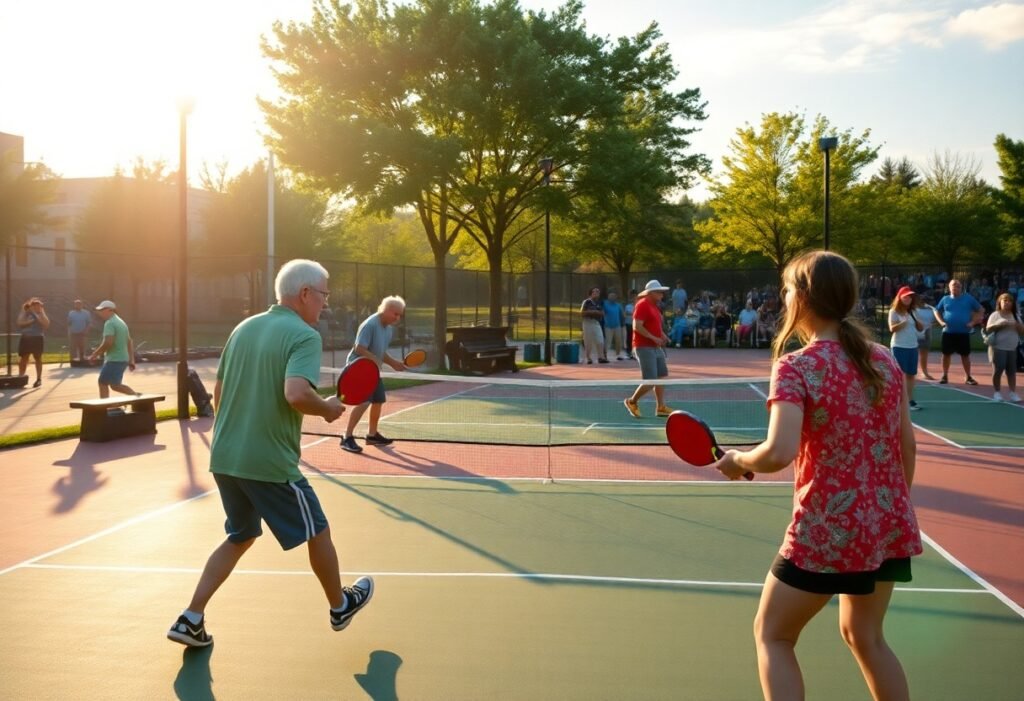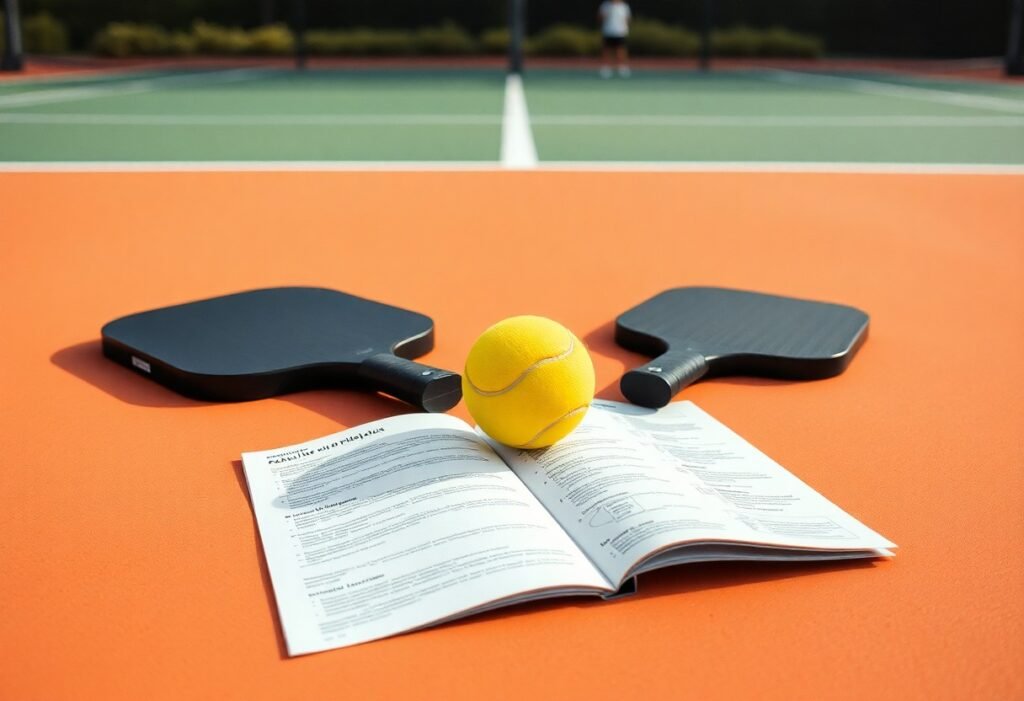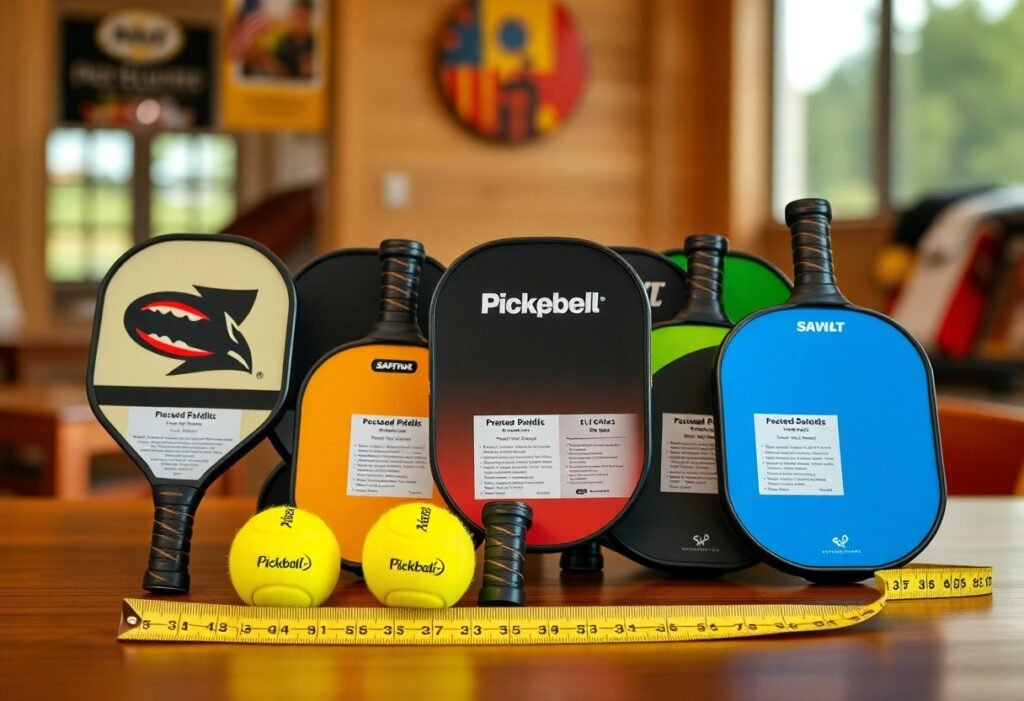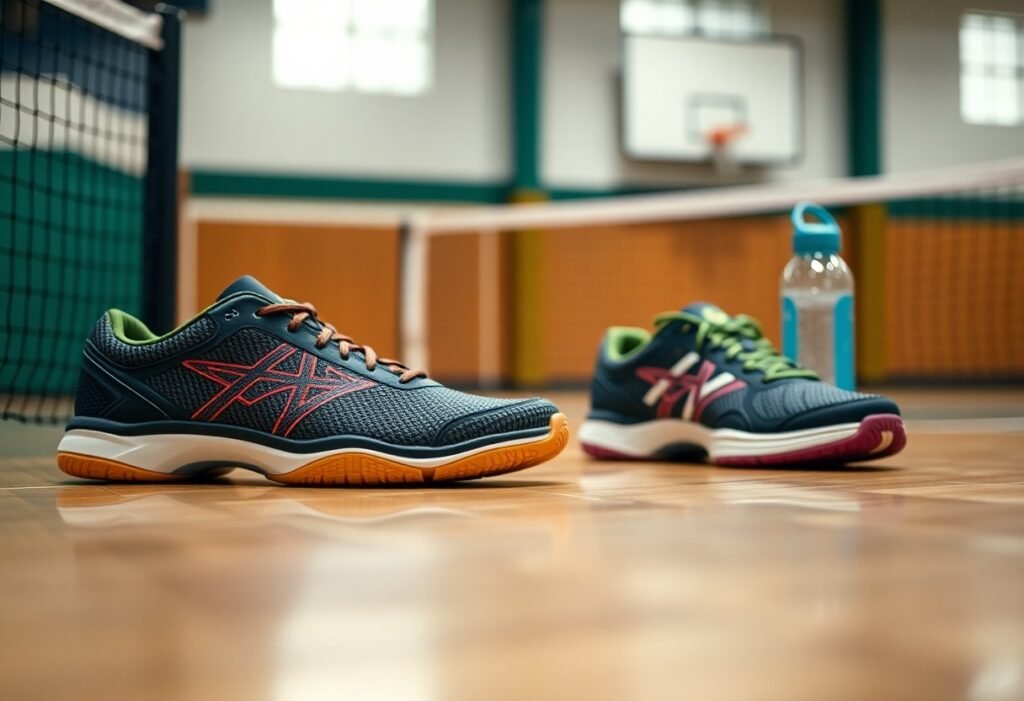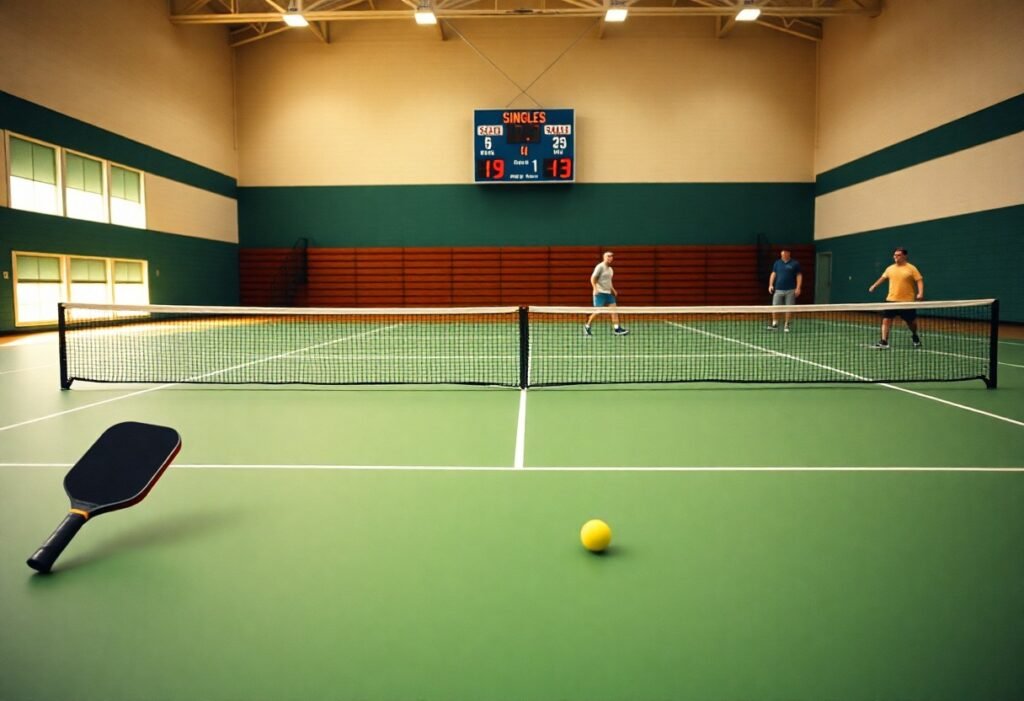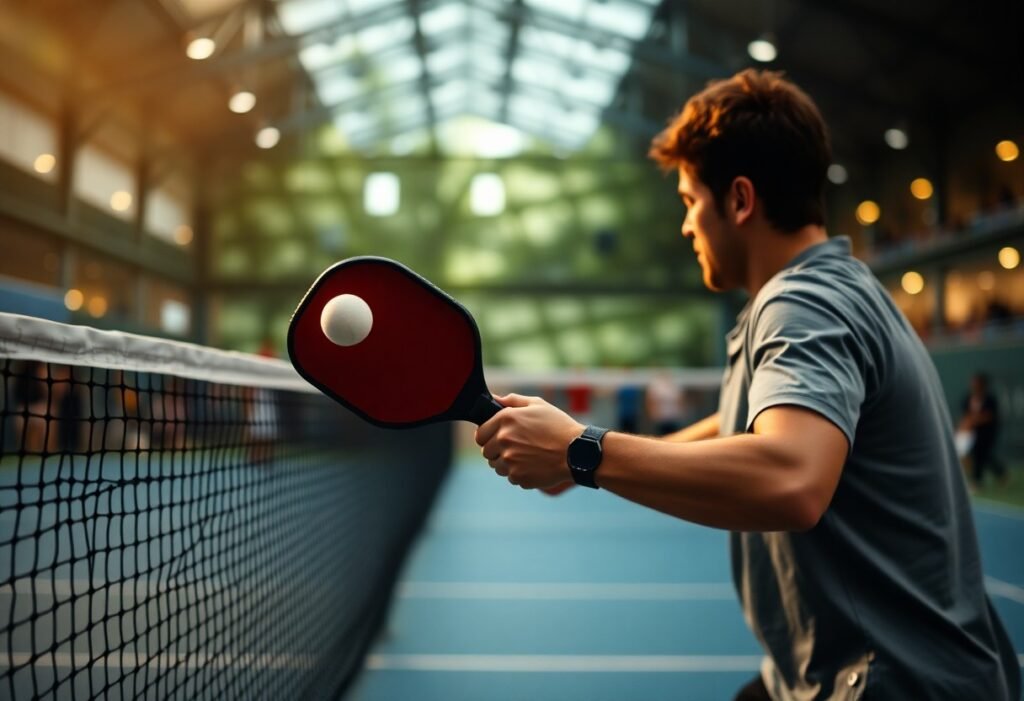Surfacing options for pickleball courts vary significantly, influencing both performance and player safety. You need to understand the differences between popular surfaces like concrete, asphalt, and cushioned materials to make an informed choice for your games. Each surface type affects ball bounce, player fatigue, and overall enjoyment of the sport. By evaluating these factors, you can select the surface that best suits your playing style and ensures your safety on the court.
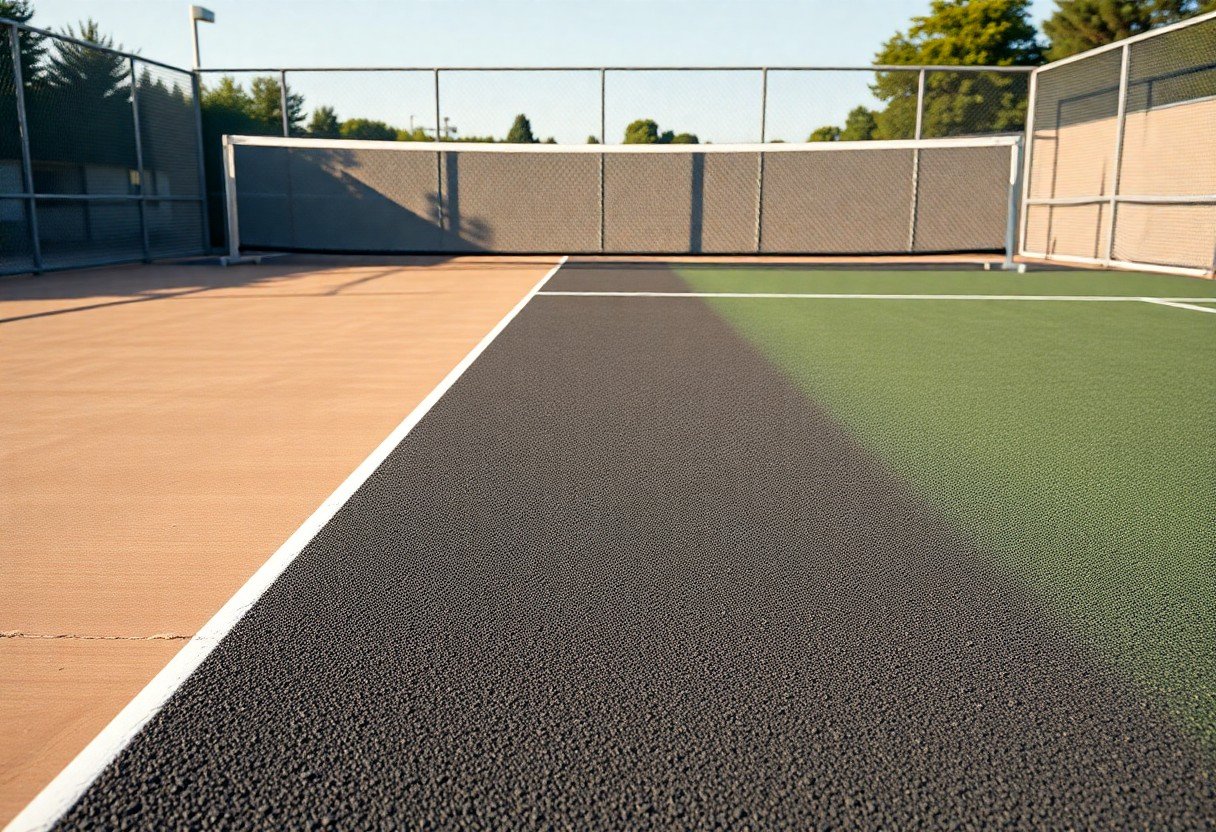
Understanding Pickleball
What is Pickleball?
Pickleball is a paddle sport that combines elements of tennis, badminton, and table tennis. You play it on a hard court with a net, using solid paddles and a lightweight plastic ball. The game can be played in singles or doubles format, making it accessible to players of all skill levels and ages.
History of Pickleball
Originating in 1965, pickleball was created by *Joel Pritchard*, *Bill Bell*, and *Barney McCallum* on Bainbridge Island, Washington, as a family activity. Initially using improvised equipment, it has evolved over the years into a popular sport across the United States and beyond.
The sport was named after the Pritchards’ dog, named Pickles, who would chase after stray balls. What began as a casual backyard game quickly gained traction, leading to the establishment of the first official rules in 1976. By the 1980s and 1990s, pickleball experienced significant growth, with dedicated courts being built and tournaments emerging, laying the foundation for today’s vibrant community of players.
Popularity and Growth of the Sport
Pickleball has seen remarkable growth over recent years, attracting millions of players worldwide. You may notice it being touted as one of the fastest-growing sports in America, with participation numbers soaring from approximately 2.5 million players in 2015 to over 4.8 million in 2022.
This surge in popularity can be attributed to its accessibility and inclusive nature. With a relatively low cost of entry, various age groups can participate, fostering community and intergenerational play. Major sports organizations are now investing in the development of leagues and professional circuits, highlighting pickleball’s potential to become a mainstream competitive sport.
Importance of Court Surface
Impact on Gameplay
The type of court surface you choose directly influences your playing experience. A hard court typically offers a fast-paced game with minimal friction, enhancing quick reactions and ball speed. Conversely, softer surfaces, such as clay or grass, provide more grip and slower play, allowing for longer rallies. Depending on your skill level and play style, the right surface can enhance your performance and enjoyment on the court.
Safety Considerations
Your safety on the pickleball court largely depends on the surface material. Hard surfaces can lead to higher risks of injuries like sprains and joint pain, especially without appropriate footwear. Alternatively, softer surfaces may reduce impact but could lead to inconsistent footing. Choosing the right surface balances performance with injury prevention.
Injuries such as ankle sprains or knee pain often result from the rigid nature of hard courts. For serious players, using surfaces that offer some give can reduce the stress on your joints. Moreover, properly designed surfaces minimize slippery conditions, which is vital for preventing falls. A well-constructed court surface is imperative not only for your performance but also for maintaining your health over the long term.
Maintenance and Longevity
The longevity of your court surface greatly affects your overall experience and safety. Regular maintenance can prevent issues like cracks and uneven surfaces, which can lead to accidents during play. For example, asphalt courts may require seal-coating every few years, while concrete surfaces need periodic resurfacing to remain reliable.

Types of Pickleball Court Surfaces
| Surface Type | Description |
|---|---|
| Asphalt | Durable, often found in outdoor courts, provides good traction. |
| Concrete | Hard, long-lasting surface that offers consistent play. |
| Grass | Natural surface providing softer ground, affects ball speed. |
| Turf | Artificial surface mimicking grass, suitable for various weather. |
| Indoor vs Outdoor | Surfaces differ in texture and grip, affecting play style. |
Asphalt
Asphalt surfaces are popular for outdoor pickleball courts due to their durability and affordability. They provide decent traction, making your movements agile during play. However, they can become hot in direct sunlight, impacting comfort while playing. Proper maintenance is crucial to prevent cracks and ensure a long lifespan.
Concrete
Concrete courts are recognized for their strength and longevity. This surface is suitable for high-traffic areas and allows for a consistent ball bounce. With proper surface treatment, concrete can also enhance traction. Keep in mind that the hardness may lead to more joint strain, so consider using court shoes for added support.
Concrete courts typically require periodic sealing to prevent moisture penetration and damage. While they are less forgiving than softer surfaces, proper shock-absorbing footwear can mitigate some impact challenges. Players often appreciate the predictability in ball behavior, crucial for tactical gameplay.
Grass
Grass courts offer a natural playing surface resulting in slower ball speeds and a unique playing experience. Players often enjoy a softer landing, which is easier on the joints. However, maintaining a grass court can be labor-intensive, requiring regular mowing and watering to keep it in optimal condition.
The unevenness of natural grass can affect ball bounce and lead to unpredictable gameplay. Grass courts often present challenges in inclement weather; they can become muddy and unplayable, thus limiting usage. While the aesthetic of a green court is appealing, practical considerations may outweigh its charm.
Turf
Turf courts simulate the feel of grass but require less maintenance. This surface is designed to withstand harsh weather conditions while providing a consistent playing experience. Turf is often chosen for its excellent drainage properties and is usable shortly after rain, making it a practical option.
Unlike natural grass, turf provides a more uniform ball bounce and is easier on the feet, reducing the likelihood of injury. Players appreciate its longevity and minimal upkeep compared to real grass. Choosing turf can offer a reliable and enjoyable playing environment year-round.
Indoor vs Outdoor Surfaces
Indoor courts typically employ different materials, like wood or specific composites, designed for optimal play. They offer better climate control, ensuring a consistent playing experience free from environmental distractions. Outdoor surfaces must prioritize durability against weather elements while providing sufficient grip and ball response.
Outdoor surfaces may experience variations in performance due to temperature and humidity changes. Indoor conditions generally promote better game continuity without weather interruptions, appealing to frequent players. Understanding these differences will help you choose the right court type for your needs.
Any choice of court surface directly impacts not only gameplay but your overall enjoyment of pickleball.
Performance Factors
When evaluating performance on various pickleball court surfaces, several key factors come into play. These factors can significantly influence your gameplay experience and effectiveness on the court.
- Ball Bounce Characteristics
- Player Movement and Traction
- Temperature and Surface Hardness
After considering these elements, you’ll find that they all contribute to how the game feels and how you perform during matches. For additional insights, check out Best court surface? : r/Pickleball.
Ball Bounce Characteristics
The bounce of the ball can vary widely depending on the court surface. Hard surfaces like asphalt or concrete typically produce a higher bounce, while softer surfaces like wood or turf tend to absorb more energy, resulting in a lower bounce. This influences how you adjust your shots and positioning.
Player Movement and Traction
Your ability to move efficiently on the court depends heavily on the surface. Surfaces such as asphalt provide good traction, allowing for explosive movements. Conversely, a slick surface may inhibit your ability to quickly change direction, potentially affecting your performance.
For optimal performance, it’s important to choose a surface that complements your playing style. A rougher surface can help enhance grip, whereas smoother surfaces may lead to slippery conditions, increasing the risk of falls. Ensuring you have the right footwear can also affect your traction.
Temperature and Surface Hardness
Temperature plays a role in how the surface behaves. Hot conditions can lead to expansion of materials, while cold can make them more brittle. A harder surface like concrete can also be tough on your joints, especially in colder weather where it feels even more rigid.
Understanding the relationship between temperature and your chosen surface type can guide your decision-making. For example, warmer surfaces can offer better ball bounce, while cold and hard surfaces might contribute to joint discomfort.
Temperature and Surface Hardness| Surface Type | Effect on Play |
| Asphalt | Can soften in heat, affecting performance |
| Concrete | Hardens in cold weather, impacting bounce |
| Wood | More consistent in temperature, less affected |
| Turf | Can absorb heat, affecting playability |
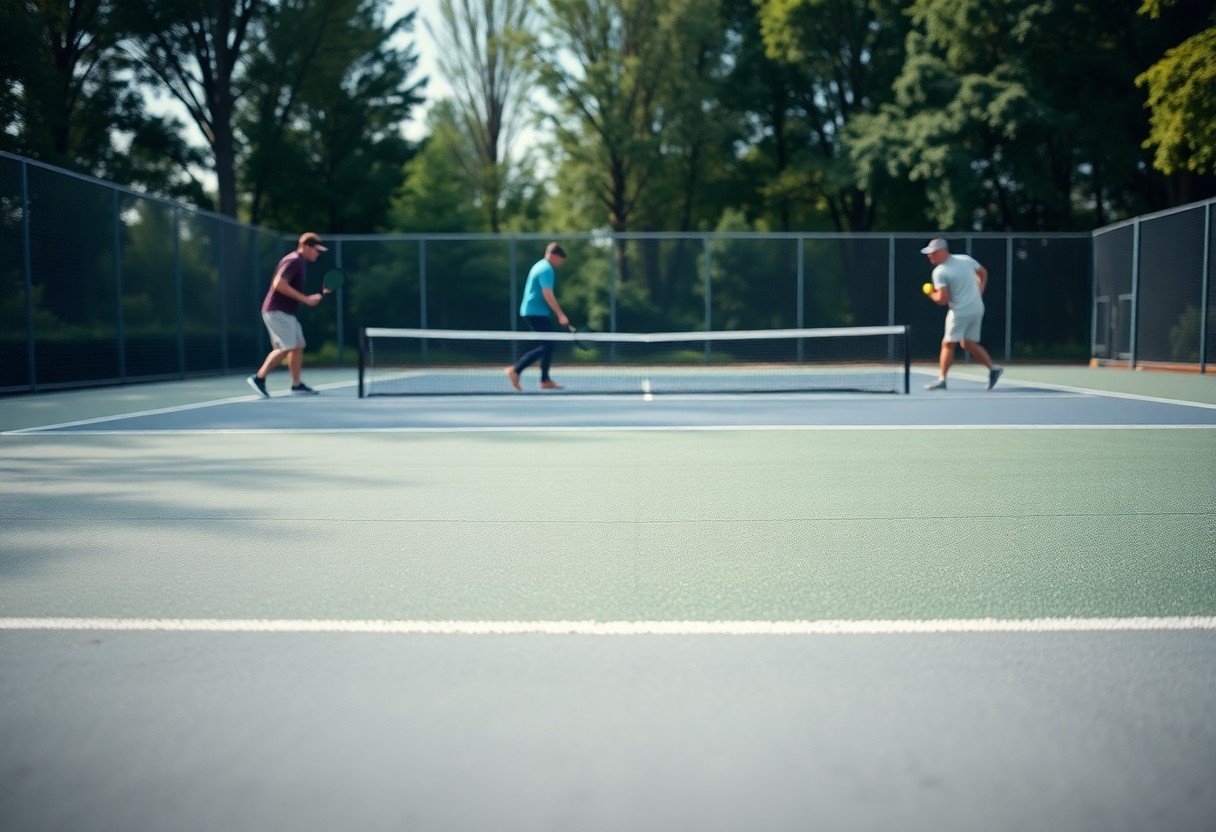
Player Preferences and Experiences
Professional Players’ Insights
Professional players often prefer outdoor acrylic courts as they combine durability with optimal ball bounce. They appreciate the consistent playing conditions these surfaces provide, allowing for high-level performance and control. Notable players have emphasized how a smooth, well-maintained surface can enhance their strategies and shot precision during competitive matches.
Recreational Players’ Feedback
Recreational players generally prioritize comfort and ease of play, with many favoring hybrid or cushioned surfaces. These surfaces reduce the risk of injuries and provide a more forgiving playing experience, making it enjoyable for longer periods of play. The feedback highlights how comfort significantly impacts their overall satisfaction while playing.
Many recreational players have reported that cushioned surfaces help alleviate joint stress, which is crucial for those who play frequently. The ability to maintain stamina while enjoying the game is vital, and the feedback indicates that a softer court can lead to longer play sessions without fatigue. Players also often note the social aspects and how a friendly atmosphere on a well-kept court contributes to their enjoyment.
Regional Differences in Surface Choice
Your geographic location can significantly influence your choice of court surface. In warmer climates, you’ll find more outdoor acrylic courts due to their durability against weather conditions, while indoor venues often opt for wood or synthetic surfaces that cater to controlled environments and year-round play.
In regions with harsher winters, indoor play becomes necessary, leading to a preference for surfaces that can withstand temperature variations. Variants like carpet courts are popular in these areas for their cushioning and moisture resistance. Coastal areas, meanwhile, might favor porous acrylic surfaces that handle humidity better. The local climate thus shapes how you experience the game, aligning your preferences with the surfaces available in your region.
Final Words
To wrap up, choosing the right pickleball court surface significantly impacts your playing experience. You should consider factors like durability, maintenance, and traction when selecting between options like asphalt, concrete, or specialized sports surfaces. Each type offers unique benefits that cater to different skill levels and preferences, so evaluate your specific needs to enhance your gameplay. Ultimately, the best choice aligns with your playing style and the conditions of your local environment, ensuring you can enjoy every match to the fullest.



